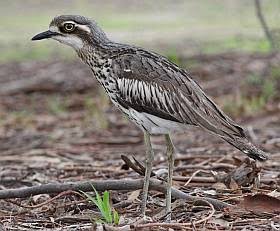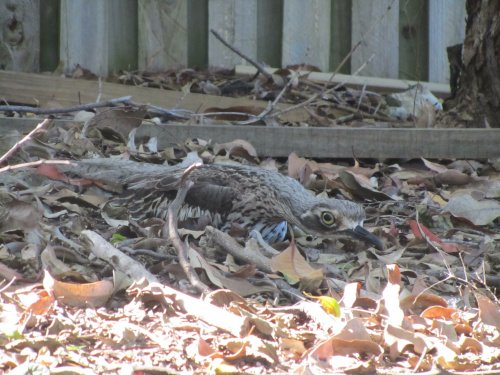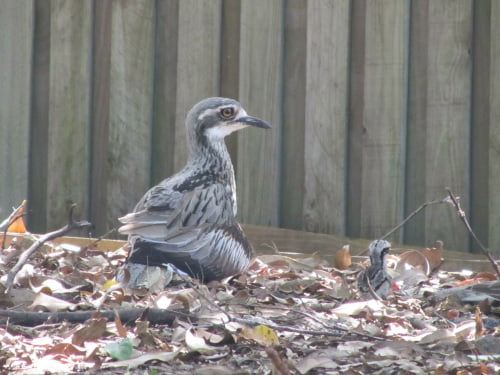
Tomaree Peninsula birdwatcher, Neil Fraser, is looking for help from the local community who may have spotted, or heard, the elusive Bush Stone-curlew (Burhinus grallarius). You may know this bird by its other name – the Bush Thick-knee.
Neil recently approached EcoNetwork to enquire if any of our members or affiliated groups had seen these birds as he is conducting a review of the conservation status of the Bush Stone-curlew in the Hunter Region. It is already listed as Endangered under NSW legislation where a Recovery Plan has been developed. Neil and other bird observers are concerned that the species might be rapidly heading towards regional extinction.
A decade ago, records show there were over 20 individuals in the Hunter region and 5 breeding pairs. Today there are only a handful of birds located around Port Stephens and only one known breeding pair.
The Bush Stone-curlew has previously been recorded at Taylor’s Beach, Fenninghams Island, Bobs Farm, Tanilba Bay, Lemon Tree Passage, Karuah, Swan Bay, Carrington/Tahlee and Pindimar. In January 2021, a single bird was recorded at United Salamander.
As birdwatchers will tell you – most often you will hear a bird before you see it. This is especially true of little brown things (lbt’s) but also in the case of the much larger Bush Stone-curlew which has an unmistakable call – have you heard a strange wailing ‘weer-loo’ at night? People often wonder what such a ghostly creature with its eerie call might look like!
This unusual-looking bird, around 55cm in height with long legs and large yellow eyes, inhabits open forests and woodlands containing a sparse grassy ground layer with fallen timber or bark. This landscape assists it to blend in with its surrounds. Both sexes are brownish-grey above with rufous and black streaks and the young are paler.


They have a fascinating mating ritual – with outstretched wings, upright tail and neck pointing forward, the birds ‘dance’ by stamping their feet on the ground while calling loudly. Each courtship may continue for an hour or more. They then take it in turns to sit on the nest (just a bare patch or scrape on the ground), 1-3 eggs are usually laid in spring-summer and again, both parents care for their young.
If you come too close, the bird will stand motionless or lie flat on the ground, with its head and neck outstretched. However, if threatened it might raise its wings up and make itself look much larger – especially if guarding its young.
If you think you have seen or heard a Bush Stone-curlew in Port Stephens and the Hunter region in the last 18 months, please contact Neil Fraser neil8fff@gmail.com
Note there are distinct differences between the Bush Stone-curlew and the Beach variety. Read EcoNetwork’s article about Beach Stone-curlews at Sunset.
Useful links:
Watch a video of a Bush Stone-curlew chick hatching
The Nature Conservation Working Group
The Endangered Bush Stone-curlew
